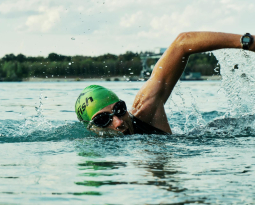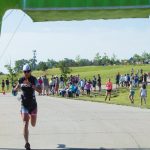
Five Training Rules
Most of truth is passed on. What do I mean? Few of us have totally original thoughts. Yes, we share what we’ve learned through life’s experiences, but mostly, we pass on great tips, insights and logic that we’ve learned through reading and listening to others. I recently came across what I thought was a great article from Chris Carmichael. I wanted to pass it along as April’s blog post because, well, it’s really good input. He’s not my coach and I have no relationship with him so there is no personal gain for me.
Though these “Rules” speak to cycling, much of this applies to running as well. I think you’ll find these five training rules very helpful as you gear up for this season of racing! Enjoy and learn with me from others! – Lincoln
By Chris Carmichael, Founder/CEO of CTS
With the world hopefully returning to normal over the next few months, cyclists are eager to get faster, stronger, and more powerful this summer. Whether you are new to training or an experienced cyclist I encourage you to remember the following 5 essential rules for training.
Training Rule #1: Train the Fundamentals First
The most effective components of training are also the simplest. Riding consistently is more beneficial than any specific type of training performed every once in a while. Moderate-intensity rides at a conversational pace are not junk miles; they are essential for developing aerobic endurance. Intervals don’t have to be complex to be effective. Increasing the intensity to a challenging aerobic pace, sometimes referred to as Tempo or Sweet Spot, for 30 minutes or more applies more stress your aerobic engine and stimulates progress. Working on maximum sustainable power for climbing or prolonged hard efforts can be as simple as 10-minute repeats at a perceived exertion of 7-8/10 (on a 10-point scale where 10 is an all-out effort), with 5 minutes of easy spinning recovery between them.
There are certainly more specific and specialized ways to improve fitness and performance, but the biggest mistake athletes make is conflating complexity with effectiveness. And during a time when people are using training as a time to think through or cope with other stresses in their lives, it is important to recognize the fundamental training value of an unstructured or minimally structured ride.
Training Rule #2: Be Patient
In the simplest terms, you improve athletic performance by applying training stress (overload) and then allowing adequate time for recovery and adaptation. Creating training stress is the only part of that equation that can be accomplished very quickly. You could ride yourself into the ground today and create a big training stress in a matter of hours. But even with pro-active recovery strategies like rehydration, post-workout nutrition, pneumatic compression boots, massage, or a nap; recovery takes time and there is a limit to how much you can accelerate that timeline. Acute recovery from hard workouts takes at least 24 hours, and it takes even longer for masters cyclists and novices of any age.
Adaptation takes even longer than acute post-workout recovery, on the order of weeks instead of days. Meaningful improvements in aerobic endurance, sustainable power, or peak power require repeated applications of training stress, separated by adequate recovery, over at least a week. We see the clearest example of this following training camps.
When cyclists come to camp or conduct a DIY camp at home, their training volume typically increases by 1.5 or 2x. Athletes who normally ride 8 hours per week ride 14-16. Cyclists who typically train 10-12 hours per week will put in more than 20 hours during a camp. Following the camp we schedule a week or so of easier activities for recovery, and we see the significant bump in the athlete’s fitness about 10-14 days after the end of the camp. This improvement is noticeable for athletes because the stimulus was so large. The incremental improvements that occur during long-term training also take time to become noticeably significant. Novices will see larger improvements more quickly because their fitness has a lower baseline and a greater capacity for growth.
Rule #3: Do Your Own Training
Obviously, no one else can do your training for you; the point is that your training has to be specific to your current fitness level, your physiology, and your goals. The basic overload-and-recovery principle works for all athletes, but how to achieve overload and how your body responds to it varies a great deal. Your heartrate and power zones can be based on the same methodology and calculations, but your individual zones will be different than your buddy’s because the initial values from a lab test or field test will be different (threshold heart rate and threshold power).
Your ‘training age’ will make your training unique as well. If you have been riding for less than a year, you are not likely to be as resilient against cumulative fatigue as an athlete who has been riding for 15 years. This means that the long-term workload you can withstand is not just based on your current level of fitness, but also the miles and hours and years you have in your legs.
There’s also a highly individual response to rest, not only during rides and workouts, but also between rides and after long training blocks. Masters athletes may need more recovery following intense or long workouts than they did when they were younger, but even that is not a given. Some masters athletes have better post-workout habits than they used to, eat better than when they were younger, and get more sleep.
The personal variables that affect the way you respond to training are a big part of the reason athletes who start with static training plans often progress to working with a coach. It’s not that the training plan was bad, but rather that aspects of the plan were incompatible with how they respond to training.
Training Rule #4: Train it or Lose it
Thankfully, generalized cycling fitness is relatively simple to maintain, even when you reduce your weekly training hours for a while. This is why consistency is so important, and perhaps more important than any particular workout type. However, the more specific strengths within your cycling fitness will go away unless you train them. If you want to keep your maximum sustainable power for climbing, you have to make sure it’s addressed in your training plan.
On a larger scale, masters athletes need to keep in mind that once lost, maximum aerobic capacity is very hard to regain. The older you are, the more important it is to avoid prolonged periods of inactivity, because you may not be able to get back to VO2 max value you had before the time off. That doesn’t mean you can’t regain fitness or improve performance, because there are many ways to measure improvement, but it should incentivize athletes in their 40s and 50s to hold on to as much of your maximum aerobic capacity as you can.
Training Rule #5: When in doubt, make it a recovery ride
There will be days when your training data indicates you’re rested and should have great form, but you end up feeling empty and exhausted on the bike. What training data doesn’t show are the lifestyle stresses you have outside of training. During the past few months, there have been and continue to be a lot of things weighing on people’s minds and keeping them up at night. Those stresses count in the overload-and-recovery balance, even if they are harder to quantify in TrainingPeaks charts or Strava’s ‘Fitness and Freshness’ graph.
Rather than skip a ride altogether, I encourage athletes to start their ride with an open mind and re-evaluate after 15-30 minutes on the road, trail, or trainer. Sometimes getting started is the hardest part, and you’ll feel great after you get going. Other times your legs will feel heavy, you’ll be distracted, or just lethargic. From a data standpoint, your heart rate may be suppressed and slow to respond to efforts, and there will be a noticeable discrepancy between your heart rate and/or power output and the perceived exertion required to produce them.
The question athletes always ask is: Do I suck it up and power through, or back off and take it easy? For athletes working toward specific goals and with a coach or who have a good understanding of the science of training, there are some times when it makes sense to power through days when you don’t feel good. But as a general rule of thumb, when in doubt, it is nearly impossible to go wrong converting a hard workout into a recovery ride or an easy endurance ride. There is nothing so special about the workout you have planned on a specific day that means missing it will cause irreparable harm to your performance. More likely than not, listening to your body and your emotions and taking it easy will allow you to return to focused, high-quality workouts sooner.
These rules are just equally applicable to new cyclists and riders with decades of experience, as well as athletes who want to be competitive and athletes who ride recreationally or for fitness. Even when you get into the granular details of training plans, work-recovery ratios, and power files, effective training for any cycling discipline abides by these rules.










